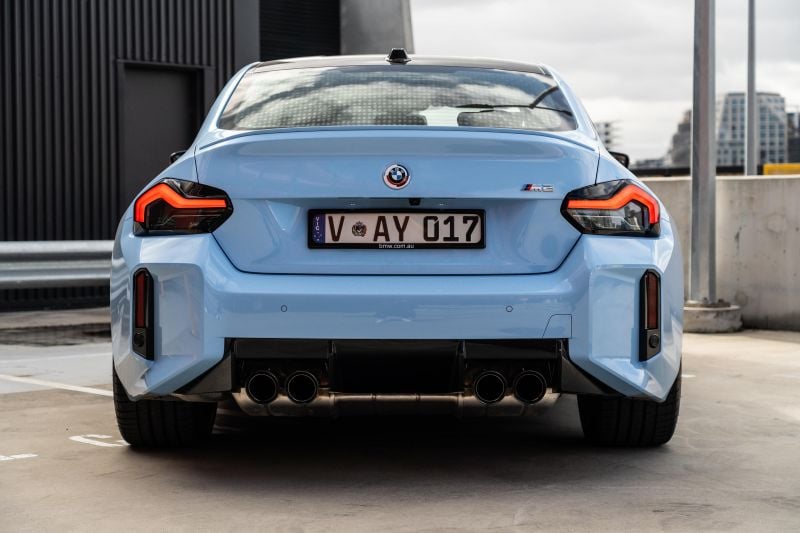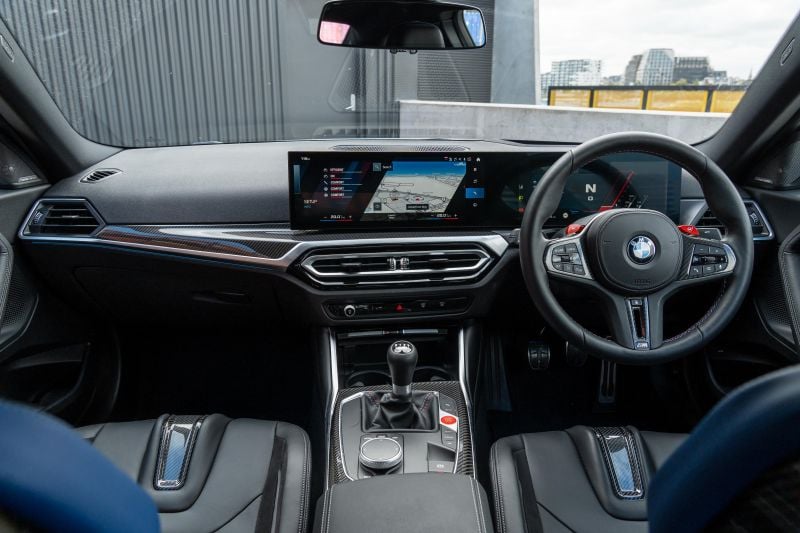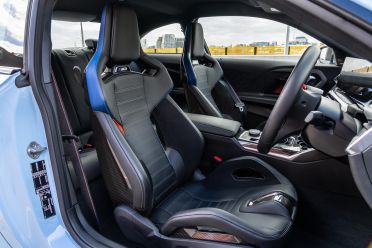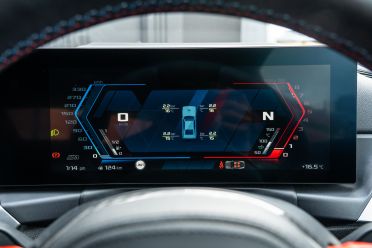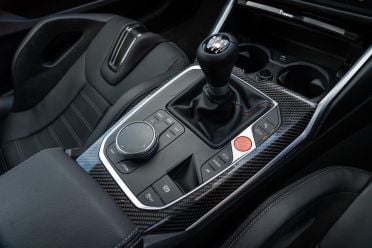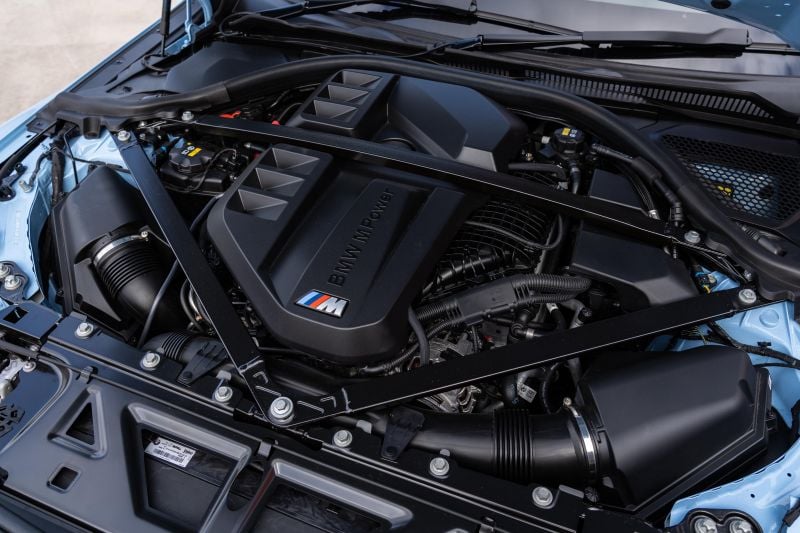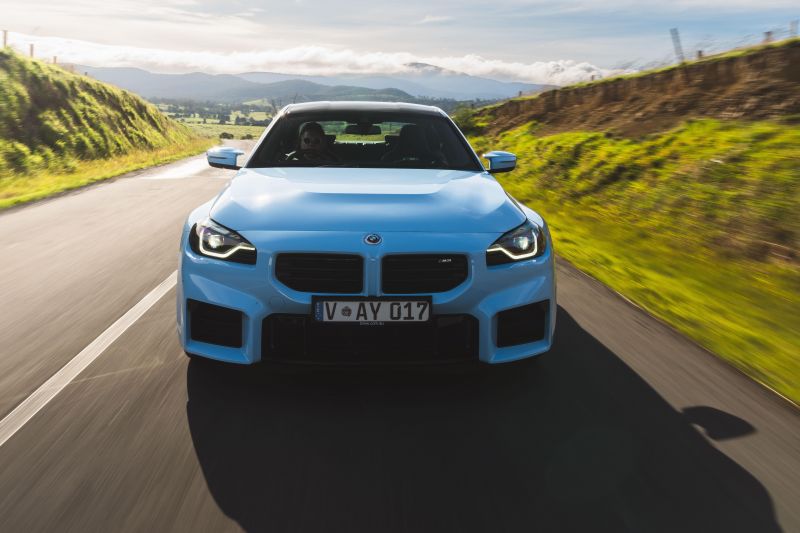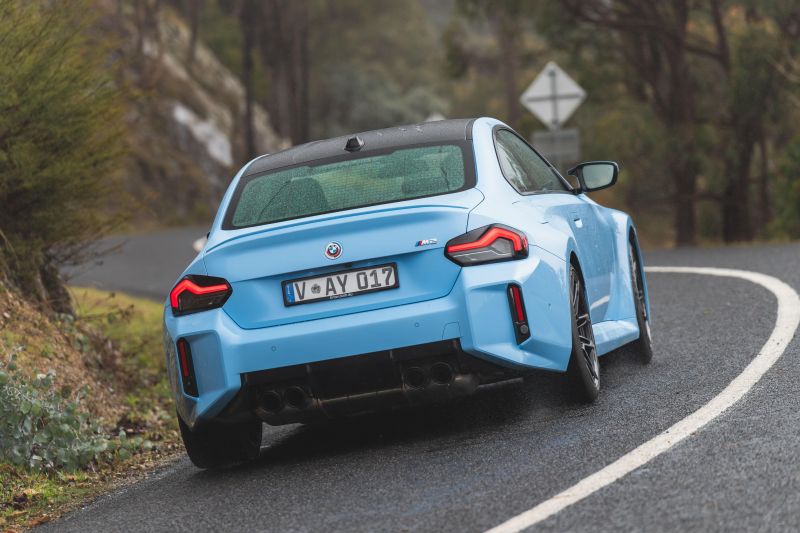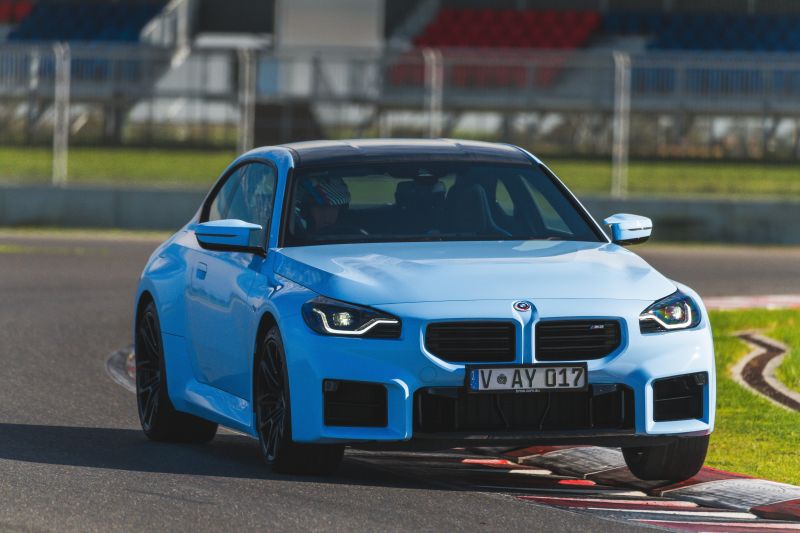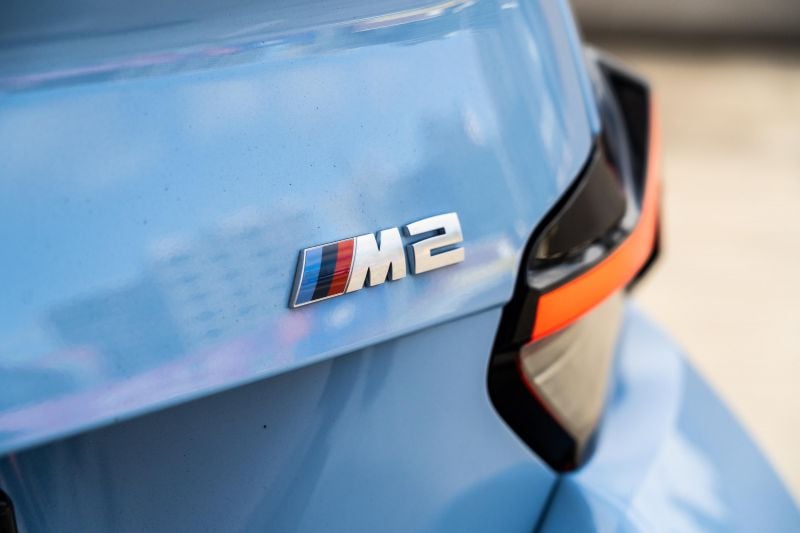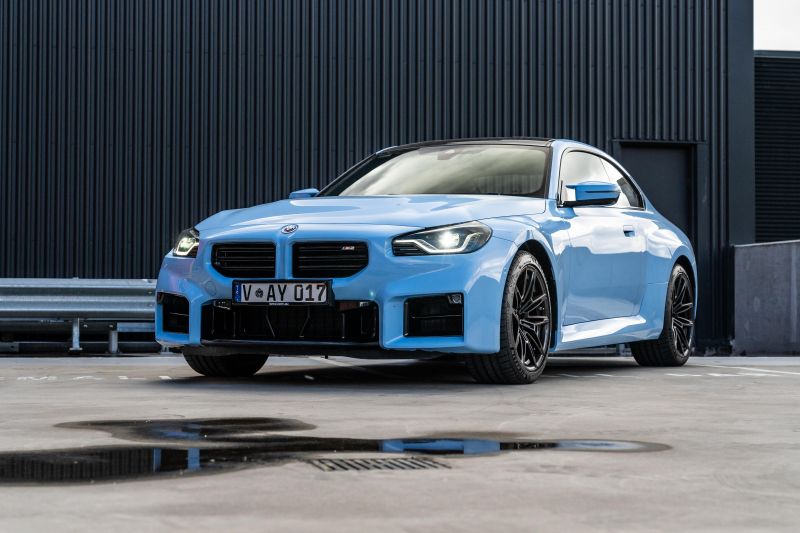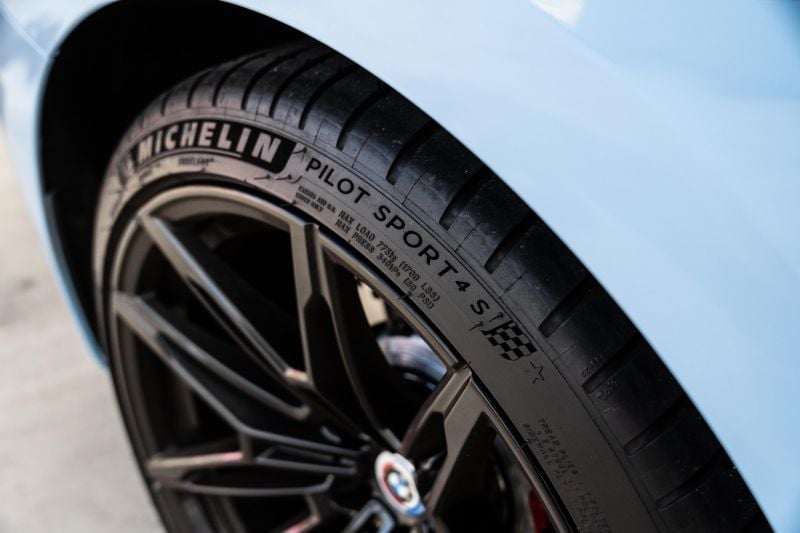No matter how hard it tries, BMW hasn’t been able to escape the shadow of its legendary sports coupes.
From the E30 M3 that started it all to the E46 M3 that some enthusiasts argue represents the high watermark for the breed, to bigger and badder beasts like the E39 M5, the brand is a victim of its own success.
Every time it releases a new M coupe, it needs to escape the shadow of past legends before it can be judged on its merits. The latest car faced with that unenviable task is the new M2 Coupe.
Under the skin, the M2 has evolved significantly compared to its predecessor. Rather than an uprated 2 Series, it’s become a slightly smaller take on the M3.
It’s being sold as a more grown-up take on the formula we knew and loved before, but one that hasn’t lost the essential small car, big engine magic that defined it.
We drove the car on the road, track, and skid pan to find out if BMW has managed the task.
How much does the BMW M2 cost?
The M2 Coupe is priced at $121,700 before on-road costs, regardless of which transmission you select.
It’s possible to spend an additional $14,500 on the Carbon Experience package, however, upping the price to $136,200 before on-roads.
The M2 goes head-to-head with the Audi RS3 (from $92,370) and Mercedes-AMG A45 S ($119,900).
What is the BMW M2 like on the inside?
The M2 has grown up inside. The old car was small and quite simple; the new one is wider, and features more technology in line with the M3.
It’s also a car where it pays to tick options boxes carefully. The carbon bucket seats included in the M Carbon Experience package look incredible and hold you firmly in place, but they don’t play nice with the clutch in the manual.
Because it sits quite centrally in the pedal box, you need to twist your leg over the carbon centre piece to access it – and if you’re wide, the bolsters hold you in so tight you’ll need to do it with your hips and torso essentially locked in place. All that offset twisting had me on the physio table.
If you want the manual, we’d be speccing the Comfort seats and pocketing the $15,000.
Seating quirks aside, the cabin looks and feels expensive. All the glossy carbon-fibre is real, the chubby leather steering wheel is lovely to hold, and the M gear selector feels rock solid when it clunks into place.
Yes, the Mercedes-AMG A45 S and Audi RS3 are nice, but neither feels quite as nice as the M2.
The latest BMW technology looks sharp, and comes loaded with a full suite of features. Once you’ve spent some time getting the home page set up most of the functions you use most are within easy reach, but the decision to move the climate controls into the display is a step backwards.
Simple tasks are more difficult than they used to be, requiring more time with your eyes off the road and hands off the wheel.
The windscreen demisters have been moved to a spot that’s obscured by drink bottles, and the death of the eight shortcut buttons that have featured in BMWs since the early days of iDrive is a shame.
At least wireless Apple CarPlay works reliably, and all the motorsports graphics look straight out of a video game.
As for the rear seats? Well, having them is better than not having them… but they’re best reserved for kids, or adults on very short drives.
Access is tight through the long doors, and once back there you have limited legroom – although amenities like air vents and USB-C ports are nice touches nicked from the M3.
ISOFIX and top tether points feature on both rear seats. Claimed boot space is 390 litres, and the rear seats fold 40/20/40.
What’s under the bonnet?
Power in the M2 comes from a 3.0-litre turbocharged inline-six engine making 338kW of power and 550Nm of torque.
That’s down marginally on what you get in the bigger M3, but it’s worth bearing in mind the M2 is lighter and rear-wheel drive only. Eight-speed automatic and six-speed manual transmissions are on offer.
The manual takes a claimed 4.3 seconds in the 100km/h sprint, where the automatic is marginally faster at 4.1 seconds.
With the standard 250km/h limiter removed, the M2 will do 285km/h given a long enough stretch of autobahn.
Claimed fuel economy is 9.7 litres per 100km on the combined cycle, and the M2 drinks 98 RON premium unleaded. The fuel tank holds 52 litres.
How does the BMW M2 drive?
The M2 was initially quite hard to get along with.
The carbon seats are pretty firm, and make it harder to get to the clutch than they really should, and the gearshift on our test car was classic BMW. With a long clutch, rubbery shift, and generally unsatisfying action, it was a bit of a let down.
Then we drove the same car a few months later and, with a few more kilometres beneath its wheels, it all came together. It’s still far from the last word in quality manual shifts, but it loosened up enough to at least feel like it wasn’t getting in the way – which is progress.
The fact this engine is a torquey, flexible beast helps as well. Although there’s some turbo lag from right down low in the rev range, the M2 will happily sit in third gear between essentially standstill and highway speeds. The automatic is easier to use again, slurring smoothly around town, but the manual isn’t what you’d call hard to handle.
Despite its pugnacious exterior and sporty wheel and tyre combination, you could drive the M2 every day if you needed. It does a good job keeping passengers isolated from rough roads in its most relaxed drive mode, and even Sport could theoretically be used on-road.
Put your foot down in the wet and you’re immediately aware of how much grunt is being sent to those rear Michelin tyres. BMW’s traction control and stability control are on hand to keep things in check, but it’s not point-and-shoot in any weather like the M3 with its xDrive system.
All things considered though, you really can push the M2 on the road and it doesn’t feel like it’ll bite.
The front end is razor sharp, and when you get on the throttle you can feel how beautifully balanced the chassis is. It just settles into a classic front-engine, rear-drive stance you can play with using the accelerator, and feels a bit livelier than the heavier M3 with its longer wheelbase and xDrive system.
The ability to configure the engine, suspension, brakes, steering, and transmission means you’re able to artificially engineer out some of the traits that tend to get in the way of German performance cars on Australian roads.
Pimply backroads can’t undermine the M2’s composure with the suspension flicked to Comfort, for example, and the steering never really needs to be in its heaviest setting on the road. Rev-matching can be toggled on and off, and the throttle can be dulled or sharpened based on your preferences.
But the electronic cleverness doesn’t stop there. BMW M fits its cars with a 10-stage traction control system designed to make oversteer accessible, but not scary.
Set to 10, it keeps an iron grip on the rear axle. Set to 1, it just gently dulls clumsy inputs while the car is sliding… but will still allow you to make an arse of yourself if you’re not careful.
On the skid pan at The Bend in South Australia, it’s absolutely hilarious. If you’re experienced, sliding a car like the M2 isn’t particularly difficult – but not everyone who buys a car like this has owned a rear-drive performance car before, so assuming they’re drift kings is silly.
And even if you do know what you’re doing, a bit of extra help never goes astray. With the M Traction Control set to 1, its lowest setting before completely off, I had the M2 sideways around a cone circle for more than a minute, laughing the whole time.
When you manage to get the car sideways, hold it out there, and then smoothly transition out of it, the M Drift Analyser is there to give you a rating out of five stars.
It’s brilliant fun on track, too. Despite being slightly down on power compared to the M3, the inline-six absolutely rips from low in the rev range, through a torque-rich mid-range to its angry top end down The Bend’s back straight.
The brakes are mighty, and it’s more stable than the M3 Touring during the big stop at the end of the straight before rotating beautifully. There’s no doubt the xDrive system in the M3 is incredibly clever, but the rear-drive only M2 feels a bit livelier and lighter on its feet.
It’s beautifully balanced through the high-speed sections, and despite being overtly rear-wheel drive doesn’t feel like it wants to spit you off the road.
The eight-speed automatic was one area of concern, given torque converters aren’t known for being as sharp as dual-clutch transmissions at full noise.
Don’t be concerned; it’s still clever, shifts sharply at full throttle, and rev matches on the way down through the gears under heavy braking.
What do you get?
- 19-inch front, 20-inch rear alloy wheels
- Adaptive LED headlights
- Auto high beam
- Keyless entry and start
- Adaptive dampers
- Active M differential
- Tyre pressure monitoring
- Keyless entry and start (phone-based digital key for auto)
- Ambient interior lighting
- Tri-zone climate control
- Leather ‘Vernasca’ upholstery
- Heated front seats
- Electric seat adjustment
- M-branded seat belts
- Steering wheel heating
- Head-up display
- BMW Live Cockpit Professional
- 12.3-inch digital instrument cluster
- 14.9-inch touchscreen
- BMW Operating System 8
- Cloud-based maps
- OTA compatibility
- DAB+ digital radio
- Harman Kardon surround sound system
- Wireless Apple CarPlay, Android Auto
- Wireless smartphone charging
M Carbon Experience ($14,500) adds:
- M Carbon bucket seats
- Voucher for BMW M Driving Experience Advance courses
- Top speed increase from 250km/h to 285km/h
Is the BMW M2 safe?
The BMW M2 hasn’t been crash tested by ANCAP or Euro NCAP. The related 3 Series has a five-star rating, however.
Standard safety features include:
- Autonomous emergency braking
- Lane departure warning and steering assist
- Attentiveness Assistant
- Blind-spot monitoring
- Rear-cross traffic assist
- Active cruise control with stop & go (AT)
- Parking Assistant
How much does the BMW M2 cost to run?
The M2 has a five-year, unlimited-kilometre warranty like the wider BMW range.
Maintenance is required every 12 months or 20,000km, and a five-year service package will set you back $3480.
CarExpert’s Take on the BMW M2
The BMW M2 is still a fast, fun rear-drive coupe – but it’s also a more mature take on that formula.
You could drive one every day without too much stress (provided you spec the right seats with the manual), but it’s still relatively compact in the context of today’s fast-growing new cars.
It’s also the most engaging, old-school member of the BMW M line-up. Yes, there are electronics on hand to help if you want, but you can also switch them all off and fly by the seat of your pants.
There’ll be some people who bemoan the fact this isn’t an E30 M3 reincarnate, but that’s just not possible in 2023. With the tools at its disposal, BMW has done a good job modernising the concept.
Click the images for the full gallery
MORE: Everything BMW M2

